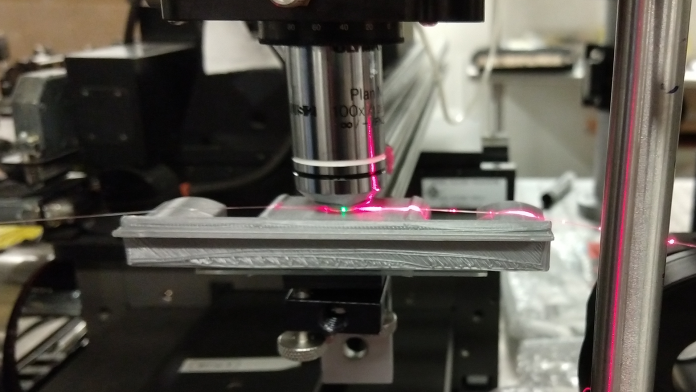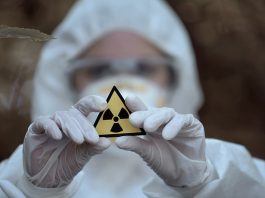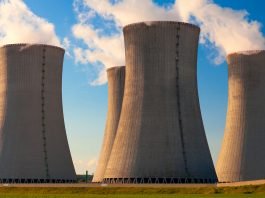When the world needs stable and carbon-free nuclear energy as electric baseload to support the green revolution, fibre optical sensors can help.
This article discusses research and development efforts on radiation-hardened optical fibre sensors to support new nuclear power systems.
In 2022, global electric vehicle (EV) sales made up 10% of every new car sold in the world. In China, more than 27% of new passenger cars sold in 2022 were EVs or plug-in hybrids. As the world rapidly phases out carbon-intense gasoline-powered automobiles, a reliable and clean electricity grid becomes imperative to fully harness environmental benefits of EVs.
Coincident with the electrification of automobiles, recent years have seen many intermittent renewable energy assets, such as wind and solar, integrated into the energy grid. Scaled-up integration of these renewable sources and recent rapid decommissioning of coal-fired power plants has significantly reduced carbon emissions. However, the rapid increases in grid-tied EVs and the green transition of electricity generation have placed unprecedented stress on the grid, reinforcing the need for reliable baseload energy and motivating the integration of energy storage.
More than ever, the world needs stable and carbon-free baseload energy to support the green revolution. Nuclear energy is the only dispatchable carbon-free energy source to serve as a stable baseload for the energy grid. Recognising these opportunities, nuclear energy has seen increases in both private and public support. In the US, over a dozen nuclear energy startups have been funded by the federal government and venture capital funds to develop novel nuclear energy systems ranging from molten salt reactors to fusion reactors.1
Despite the unique opportunities mentioned above, nuclear energy remains a high-risk investment for private venture capitals due to the high up-front capital costs. Many current reactors in the US are approaching their design lifetime and may be retired if the plant licenses are not extended. New construction of conventional nuclear reactors has seen large time and cost overruns, which is discouraging future investments. Advanced microreactors are being designed for remote communities, military bases, and other applications that require deployable energy at lower scales that would not require the large up-front costs of conventional ~gigawatt scale nuclear plants. However, these microreactors may struggle to compete in larger energy markets. For example, Testoni, et al. estimated that the levelised costs of electricity generated by microreactors could range from $0.14/kWh to $0.41/kWh,2 which is far higher than the average rate in the current US power grid.
Sensor-enabled smart nuclear reactors
Safety and operational cost are two primary concerns for nuclear power plants. Maintenance costs for nuclear power plants in the US account for 66% of their total operational costs. This is significantly higher than the operational costs of gas-based (13%) and coal-based (22%) power plants.3 A transition to condition-based, risk-informed automated maintenance will contribute to a significant reduction in operation and maintenance costs of new nuclear plants and thus improve their economic viability and safety.
This transition requires improved health monitoring capabilities to reduce the reliance on staff to perform expensive, time-consuming visual examinations. The ability to install large numbers of radiation-hardened sensors for real-time monitoring of nuclear reactor components and systems would be particularly attractive. Several new reactors currently under development plan on implementing close to 1,000 sensors to improve situational awareness in and around nuclear reactor cores. Legacy sensors, such as radiation-hardened thermocouples, can be used. However, large-scale deployments of legacy electronic sensors present unique challenges. Electronic point sensors use wire-leads to extract information. Potential deployments of hundreds or thousands of sensors involve threading thousands of electrical wires through the reactor containment. This creates enormous challenges for nuclear reactor designers and these cables are also subjected to electromagnetic interference and concerns regarding cable ageing.
Fibre optical sensors could offer unique benefits in comparison to both wired and wireless electronic sensors. Fibre optic sensors are small, resilient against harsh environments, and immune to electromagnetic interference. A unique trait of fibre optic sensors is their capability to acquire distributed measurements along the length of the fibre with high spatial resolution. The ability to collect many measurements along a single optical fibre could drastically reduce wiring challenges. In some cases, the optical fibre itself, with or without laser inscription, can be used as a distributed sensor to perform temperature sensing with spatial resolution on the order of centimetres.
Since 2015, researchers at the University of Pittsburgh (Pitt), Oak Ridge National Lab (ORNL), Idaho National Lab (INL), National Energy Technology Lab (NETL), and the Massachusetts Institute of Technology Nuclear Reactor Laboratory (MITR) have significantly advanced the development and deployment of fibre optic sensors for high-temperature and extreme radiation environment applications. These efforts have been performed in collaboration with a host of industry partners such as Corning, Westinghouse, Kairos Power, and Luna Innovations. Our colleagues in Europe and Asia have also invested in this area.
Most fibre optical sensors that target extreme radiation environments have historically been fabricated by inscribing individual fibre Bragg gratings (FBGs), or periodic modulations of the fibre’s refractive index, using a femtosecond laser direct writing process. At Pitt, a reel-to-reel sensor fabrication technique using a femtosecond laser direct writing method (Fig. 1a) can produce high-temperature stable and radiation-hardened sensors in a wide array of optical fibres, including both silica and sapphire fibres. The laser processing parameters are optimised to ensure that the sensors can survive in extremely harsh conditions while maximising multiplexability.
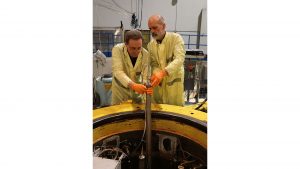
In-pile testing carried out at MITR shows that multiplexable FBG fibre optical sensors fabricated by the femtosecond laser writing technique can withstand a fast (high energy) neutron fluence of 5×1020 neutron/cm2 at temperatures of ~650°C (Fig. 1b).4 Furthermore, using FBGs as the sensor element, temperature fluctuations in the reactor core can be rapidly measured, as shown in Fig. 1(c). Instead of inscribing discrete FBGs, the femtosecond laser direct writing technique was also used to enhance the Rayleigh backscattering profile of radiation-hardened fibres by up to 40 dB over 1.6 m-long fibres to perform distributed temperature measurements, as shown in Fig. 2a.5 The laser-induced Rayleigh enhancements are high-temperature stable5 and can compensate for some of the radiation-induced attenuation of the light signal. Furthermore, these distributed fibre sensors can be interrogated using Optical Frequency-Domain Reflectometry (OFDR) to perform high spatial resolution (3 cm) temperature profile measurements.
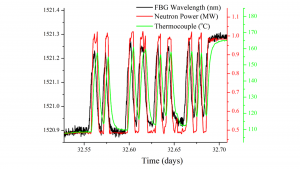
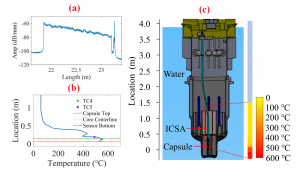
Fibre optical sensors with Rayleigh backscatter enhancements have also been successfully tested in MITR at a temperature of 560°C. Fig. 2b shows that the distributed fibre sensors can measure the spatial temperature profile measurement along the entire 1.5m-long Rayleigh enhanced region from the reactor core up to the water-cooled region. Inside the test capsule, the temperature profile measurement by the fibre sensor is consistent with results measured by two thermocouple point sensors, as shown in Fig. 2b. The potential of the innovative fibre sensors developed by our team is illustrated in Fig. 2c.
Machine Learning: Drifting sensors are better than no sensors
Although fibre optical sensors can survive harsh in-pile conditions to perform high spatial resolution measurements in harsh environments, the radiation-induced sensor drift severely limits the validity and performance of distributed fibre sensors.
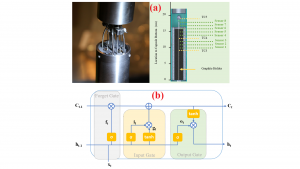
(a) photo and 3D sketch of test capsule housing thermocouple 3-5 (TC3, TC4 and TC5) and fibre sensors for MITR in-pile sensor tests, and (b) LSTM neural network used for Machine Learning
Luckily, data analytics techniques, such as sensor fusion and Machine Learning, could be used to address this challenge. These techniques use other radiation-hardened sensors to augment results harnessed by distributed fibre sensors. Fig. 3 is an example. Fig. 3a shows an in-pile fibre sensor test capsule at MITR, where three thermocouples (TCs 3-5) were used to measure temperature at three different locations with varying neutron flux. Fig. 3b illustrates a deep neural network Machine Learning method used to understand fibre sensor drift at the locations of the TCs. Based on information collected at these locations, another neural network was used to correct for sensor drift at other locations.
Using this approach, we have successfully corrected for the drift of distributed fibre optical sensors in post-processing. The distributed temperature predictions between TC3 and TC5, with respect to the capsule bottom, are shown in Fig. 4. The blue curve is the temperatures converted by the measured spectral shift data without considering the sensor drift. Over 50°C difference between the sensor prediction and actual TC3-5 measurements were observed. However, using the Machine Learning schemes, the sensor drift was corrected at the TC4 location. Using this knowledge, the neural network corrected the distributed fibre sensor measurement at TC3 and TC5 locations, which achieve outstanding agreements with the TC results within 4°C. This shows the power of sensor fusion. It may be possible to use even a single TC to address fibre sensor drift.
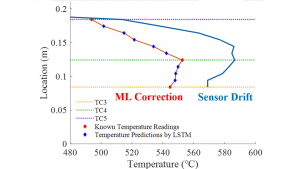
Fundamental understanding of radiation effects
In addition to identifying improved methods for inscribing fibre optical sensors and compensating for measured drift, research at ORNL has sought to improve the fundamental understanding of radiation effects in fibre optic sensors to guide future research efforts. This includes identifying the most promising fibre materials, dopants, sensing mechanisms, and operating wavelengths, depending on the applications. These efforts take advantage of the materials science expertise and the unique irradiation and post-irradiation examination facilities available at the US national laboratories.
ORNL’s High Flux Isotope Reactor (HFIR) provides the highest steady-state neutron flux in the US and is the reactor of choice for performing accelerated damage studies of materials. Although in situ testing of fibre optics is currently being performed in HFIR to the highest ever reported neutron flux and fluence, these studies were preceded by irradiating drop-in capsules containing bulk materials from which fibre optic sensors are often fabricated. These materials included single-crystal sapphire, which is a popular material for fabricating fibre sensors for extreme temperatures beyond the conventional limits of fused silica glass (up to ~1700°C). Although sapphire is single-crystalline and thought to be more susceptible to radiation-induced defects, compared to amorphous fused silica, sapphire fibres showed minimal radiation-induced attenuation during irradiation to low (1015 fast neutrons/cm2) neutron fluence at temperatures up to 1000°C.6 However, when sapphire materials were subjected to high neutron fluence (1021 fast neutrons/cm2) irradiation at temperatures close to 700°C, the samples became completely opaque (Fig. 5).7 This contrasts with the transparent fused silica samples irradiated under the same conditions.8 The high attenuation in sapphire was explained by the formation of radiation-induced voids that form due to the combination of a high radiation dose (formation of point defects, including vacancies) and high temperatures that allow vacancies to become mobile and form larger voids that scatter light and increase the attenuation. Void formation had been observed previously, but this was the first study to identify the effect that formation has on optical properties, which greatly limits the applications of sapphire fibres in nuclear reactors.
Conclusion and outlook
This article summarises many research efforts being performed by researchers around the world to demonstrate the feasibility of deploying optical fibres and fibre optical sensors in extreme radiation environments. Many established and emerging nuclear energy companies have been attracted by the distributed sensing capabilities of fibre sensors to provide precise measurements with high spatial resolution. With proper material and sensor selection guided by materials science, optical engineering, and data analytics, in-pile distributed fibre sensor measurements could be a viable solution to improving health monitoring capabilities in advanced nuclear reactors. As data is becoming a critical component of future nuclear energy systems, distributed fibre sensors could become an integrated part of nuclear I&C systems for safe, reliable, and efficient nuclear energy in a decarbonised world.
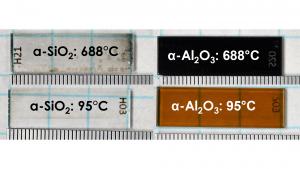
About the authors
Dr Kevin P Chen is Paul E Lego Chair Professor of Engineering at the University of Pittsburgh. He also holds a joint appointed scientists with Idaho National Laboratory.
Dr Christian M Petrie is a Senior R&D Staff member and leads the Advanced Fuel Fabrication and Instrumentation Group of the Nuclear Energy and Fuel Cycle Division at Oak Ridge National Laboratory.
References
- https://www.energy.gov/ne/articles/energy-departments-advanced-reactor-demonstration-program-awards-30-million-initial
- R. Testoni, A. Bersano, and S. Segantin, “Review of nuclear microreactors: Status, potentialities and challenges,” Prog. Nucl. Energy, vol. 138, p. 103822, 2021
- Nuclear Power Economics and Project Structuring. 2017
- M. A. Zaghloul, et al., Optics Express, 26, 11775-86 (2018)
- J. Wu, et al., Journal of Lightwave Technology, 39, 4873-4884 (2021)
- Petrie, Christian M., and Thomas E. Blue. “In situ reactor radiation-induced attenuation in sapphire optical fibers heated up to 1000° C.” Nuclear Instruments and Methods in Physics Research Section B: Beam Interactions with Materials and Atoms 342 (2015): 91-97
- C.M. Petrie et al., “Optical transmission and dimensional stability of single-crystal sapphire after high-dose neutron irradiation at various temperatures up to 688°C,” Journal of Nuclear Materials 559 (2022) 153432
- C.M. Petrie et al., “High-Dose Temperature-Dependent Neutron Irradiation Effects on the Optical Transmission and Dimensional Stability of Amorphous Fused Silica,” Journal of Non-Crystalline Solids 525 (2019) 119668
Please note, this article will also appear in the thirteenth edition of our quarterly publication.

